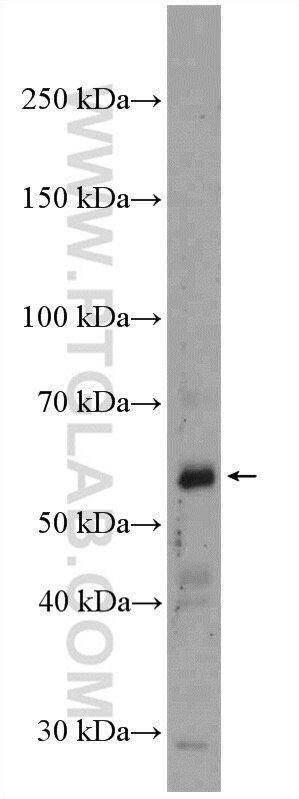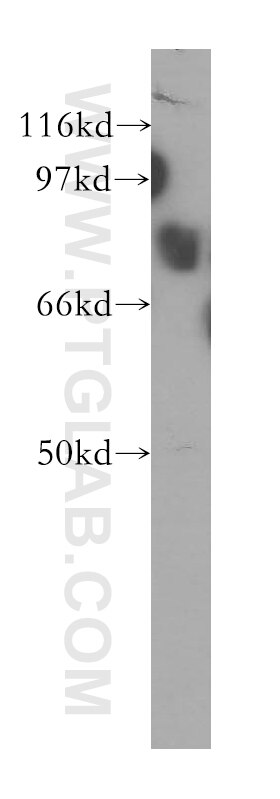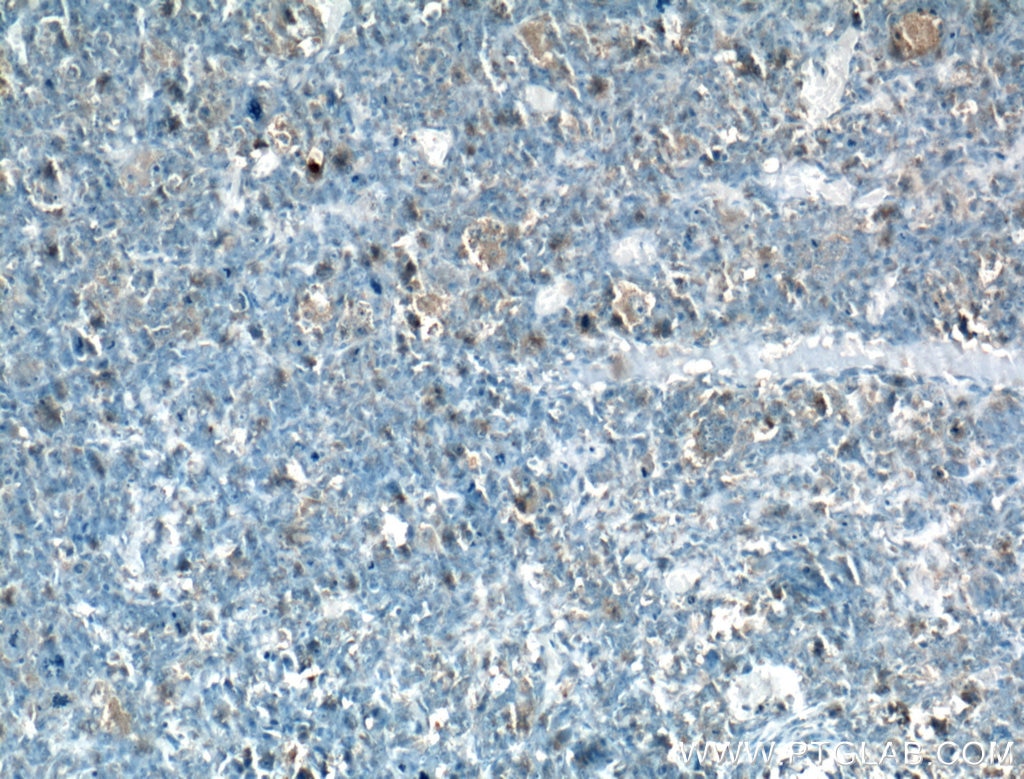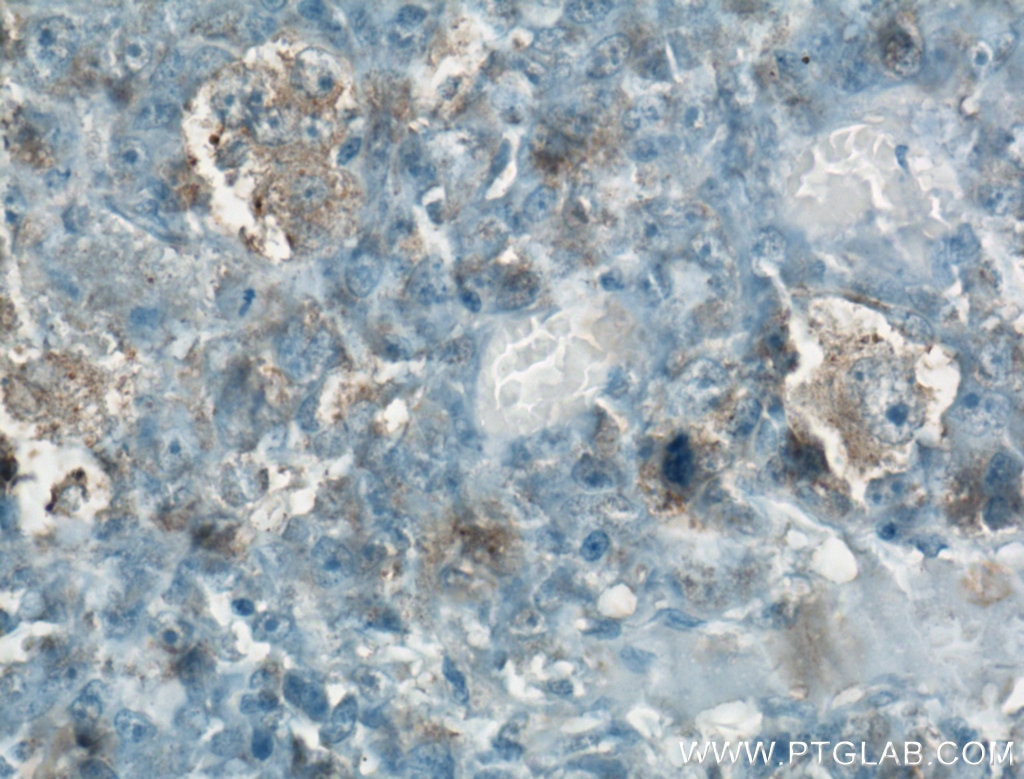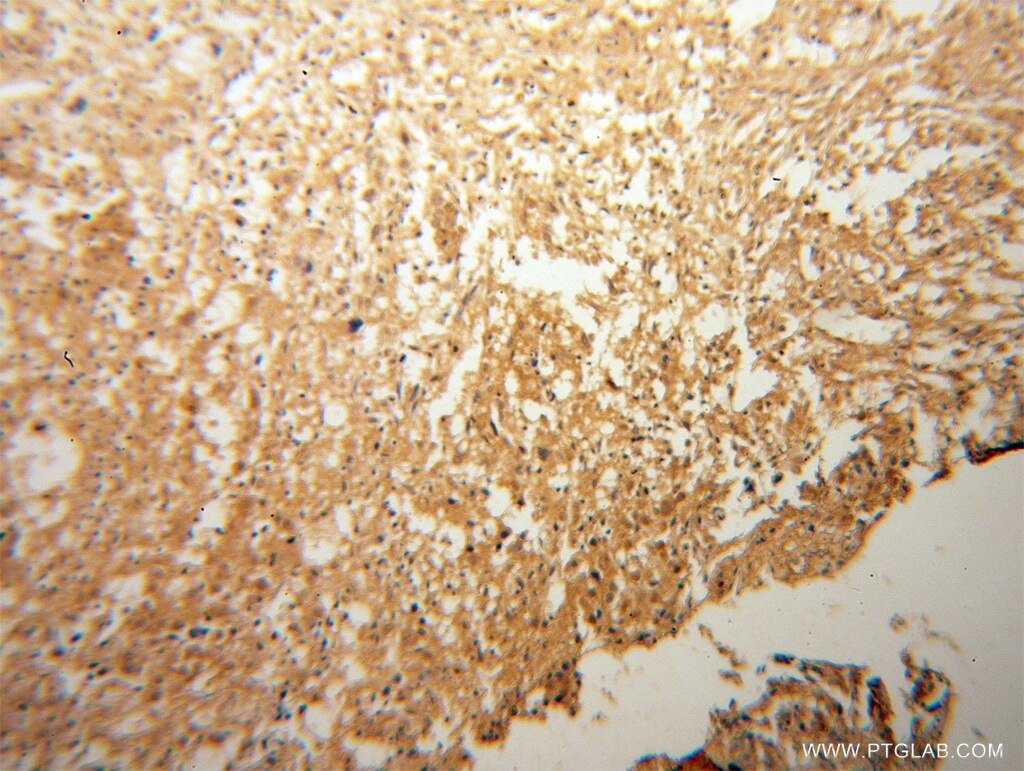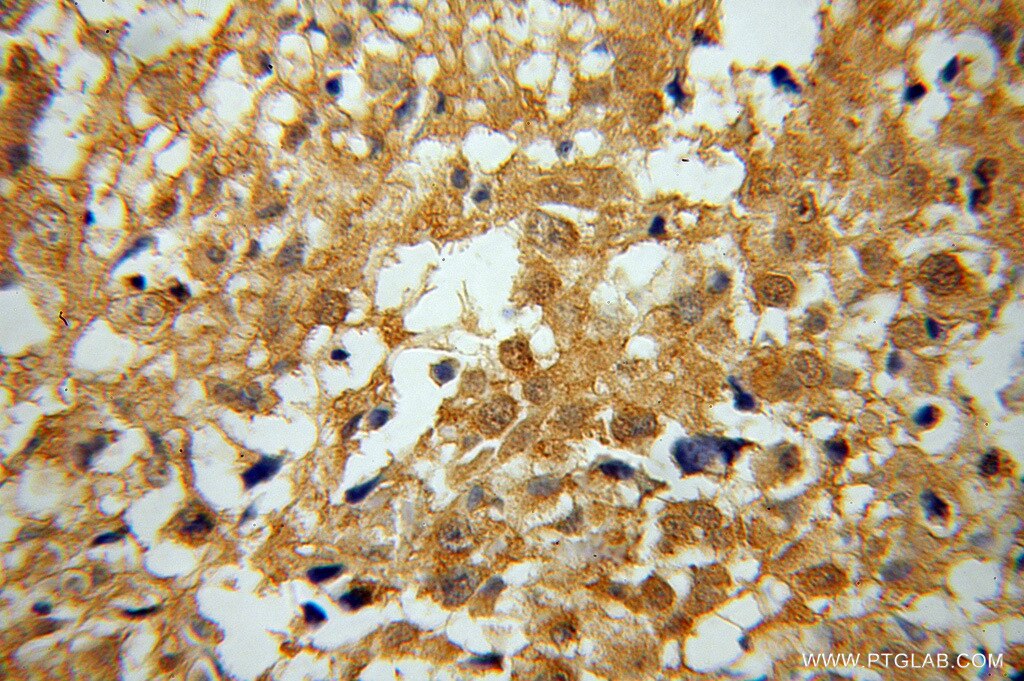Anticorps Polyclonal de lapin anti-COP1
COP1 Polyclonal Antibody for WB, IHC, ELISA
Hôte / Isotype
Lapin / IgG
Réactivité testée
Humain, rat, souris
Applications
WB, IHC, ELISA
Conjugaison
Non conjugué
N° de cat : 13542-1-AP
Synonymes
Galerie de données de validation
Applications testées
| Résultats positifs en WB | tissu cardiaque humain, tissu cardiaque de souris |
| Résultats positifs en IHC | tissu d'ostéosarcome humain, il est suggéré de démasquer l'antigène avec un tampon de TE buffer pH 9.0; (*) À défaut, 'le démasquage de l'antigène peut être 'effectué avec un tampon citrate pH 6,0. |
Dilution recommandée
| Application | Dilution |
|---|---|
| Western Blot (WB) | WB : 1:500-1:1000 |
| Immunohistochimie (IHC) | IHC : 1:50-1:500 |
| It is recommended that this reagent should be titrated in each testing system to obtain optimal results. | |
| Sample-dependent, check data in validation data gallery | |
Applications publiées
| KD/KO | See 1 publications below |
| WB | See 1 publications below |
Informations sur le produit
13542-1-AP cible COP1 dans les applications de WB, IHC, ELISA et montre une réactivité avec des échantillons Humain, rat, souris
| Réactivité | Humain, rat, souris |
| Réactivité citée | Humain |
| Hôte / Isotype | Lapin / IgG |
| Clonalité | Polyclonal |
| Type | Anticorps |
| Immunogène | COP1 Protéine recombinante Ag4484 |
| Nom complet | ring finger and WD repeat domain 2 |
| Masse moléculaire calculée | 731 aa, 80 kDa |
| Poids moléculaire observé | 90 kDa |
| Numéro d’acquisition GenBank | BC039723 |
| Symbole du gène | COP1 |
| Identification du gène (NCBI) | 64326 |
| Conjugaison | Non conjugué |
| Forme | Liquide |
| Méthode de purification | Purification par affinité contre l'antigène |
| Tampon de stockage | PBS avec azoture de sodium à 0,02 % et glycérol à 50 % pH 7,3 |
| Conditions de stockage | Stocker à -20°C. Stable pendant un an après l'expédition. L'aliquotage n'est pas nécessaire pour le stockage à -20oC Les 20ul contiennent 0,1% de BSA. |
Informations générales
COP1 is also named as RFWD2, RNF200 and belongs to the COP1 family. It is a ubiquitin ligase that targets key regulators for degradation, and DET1 complexes with COP10 and DDB1, which is proposed to aid in COP1-mediated degradation (PMID:22705257). The endogenous COP1 is localized predominantly in the nucleus, but small amount may also be present in the cytosol. Within the nucleus, COP1 is present in both the nucleoplasm (NP) and the nuclear envelope (NE) fractions, although COP1 is more enriched in the nucleoplasm (PMID:12466024). Two of the COP1 isoforms identified by RNA-seq analysis predicted the size of two proteins detected by the antibody for COP1, a 75 kDa band, corresponding to the longer isoform, and a 50 kDa band corresponding to the shorter isoform. (PMID:24714719). It has been shown that COP1 forms dimerization through its coiled-coil region.
Publications
| Species | Application | Title |
|---|---|---|
Cancer Lett Primate-specific miR-944 activates p53-dependent tumor suppression in human colorectal cancers.
|
